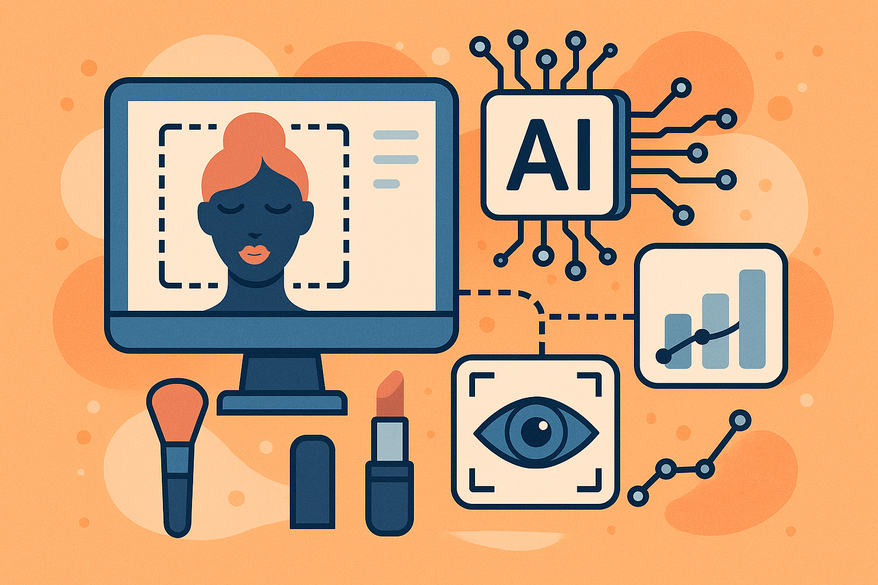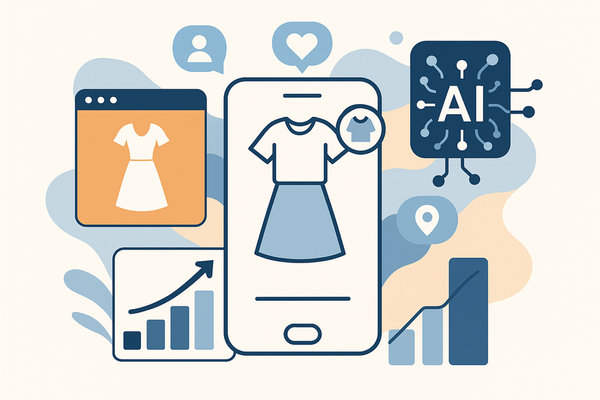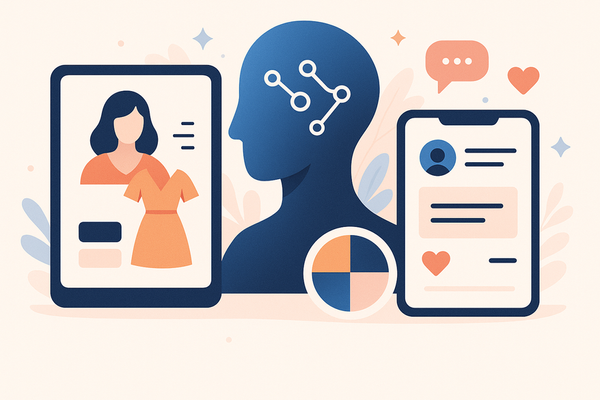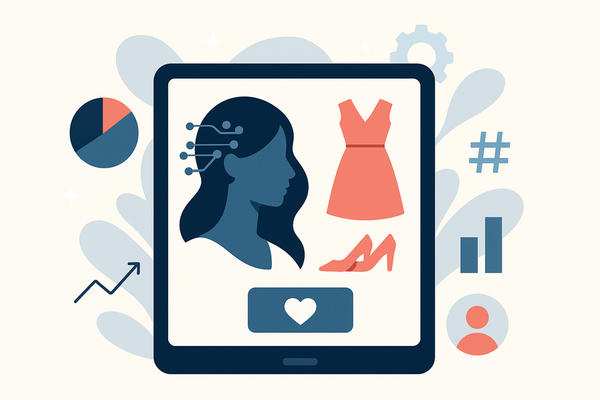AI Beauty Standard Analysis: Redefining Modern Beauty Norms with Artificial Intelligence
Explore how AI beauty standard analysis is reshaping modern beauty norms using machine learning, image recognition, and data-driven insights.

Estimated reading time: 7 minutes
Key Takeaways
- AI transforms beauty standards with data-driven insights shaping modern ideals.
- Core technologies: machine learning, image recognition, and big data analytics.
- Benefits include personalization, inclusivity, and objective metrics.
- Challenges: algorithmic bias, mental health impacts, and cultural reductionism.
- Future trends: AR filters, dynamic scoring, and ethical AI frameworks.
Table of Contents
- Background & Context: Beauty Standards and Beauty Norms
- Understanding AI in the Beauty Industry
- How AI Analyses Beauty Standards
- Implications: Inclusivity, Diversity, and Ethical Considerations
- Future Trends & Responsible AI in Beauty
- Conclusion: AI Beauty Standard Analysis Summary
In this ai beauty standard analysis, we explore how artificial intelligence is reshaping what society views as beautiful. Artificial intelligence (AI) refers to computer systems designed to simulate human intelligence through algorithms capable of learning, predicting, and making decisions. Today, AI’s influence in the beauty industry extends from facial recognition in cosmetics to personalized skincare regimens powered by machine learning models.
Major cosmetic brands and startups use AI-driven image recognition to analyze skin conditions, symmetry, and pigmentation, then recommend tailored products. Real-world examples include virtual try-on apps that map makeup shades to individual facial features, and AI-powered skin scanners in salons that evaluate moisture levels and sun damage.
This post will inform and analyze how AI is driving the evolution of beauty standards. We’ll trace the history of aesthetic norms, dive into core AI methodologies, examine case studies of algorithmic analysis, weigh benefits and ethical challenges, and look ahead to future trends. By the end, you’ll understand how ai beauty standard analysis is not just a buzzword, but a force reshaping modern perceptions of beauty through data-driven insights and scalable automation.
Source: How AI Interprets Beauty
For a deeper dive into AI-driven looks analysis, check out Maxx Report, which provides personalized beauty insights and data-driven recommendations. Here’s a quick look at how it works:
Background & Context: Beauty Standards and Beauty Norms
Defining Traditional Beauty Standards
- Ancient Greek Symmetry: The Greeks prized facial proportion and balance, embodying their golden ratio formula (a+b)/a = a/b ≈ 1.618. Sculptures and masks illustrate idealized faces adhering to this ratio. Golden Ratio History
- Renaissance Ideals: Artists like Sandro Botticelli applied proportional rules to convey harmony. The so-called “divine” proportions guided portraiture and frescoes.
Evolution of Beauty Norms
- Localized to Globalized: Early ideals varied by region—Mesoamerican jade skin, East Asian porcelain complexions, West African full-figure forms.
- Mass Media Impact: 20th-century film stars, fashion magazines, and television propagated narrower, Western-centric looks. Magazines like Vogue standardized imagery of slender physiques and symmetrical features.
Digital Technology’s Role
- Internet & Social Media: Platforms like Instagram and TikTok broadcast beauty trends worldwide. Hashtags (#nofilter, #beautyhacks) create unified aesthetic goals.
- Image-editing Apps & Filters: Tools like Snapchat filters and FaceTune smooth skin, enlarge eyes, and alter jawlines in seconds. These digital masks reinforce unattainable norms.
- AI-Driven Trendsetting: Today, algorithmic feeds prioritize posts that fit data-derived beauty templates, accelerating trend adoption. Users see consistent “ideal” looks across feeds, shaping expectations.
Key Takeaway
As technology progressed, static cultural standards morphed into dynamic, data-informed beauty norms. AI now stands at the frontier, analyzing billions of images to define tomorrow’s ideals.
Understanding AI in the Beauty Industry
In beauty, AI systems simulate human analysis by processing visual and behavioral data through algorithms such as machine learning and neural networks. Core technologies include deep learning, image recognition, and big data analytics.
Key Applications of AI in Cosmetics
- Facial Symmetry & Skin Quality Assessment
– Image recognition models detect facial landmarks (eyes, nose, mouth) and measure skin texture, spotting pores, wrinkles, and pigmentation. Importance of Facial Symmetry
– Brands like L'Oréal’s ModiFace demo: real-time skin mapping to suggest corrective serums. - Trend & Consumer-Preference Prediction
– Neural networks analyze hashtags, engagement rates, and e-commerce metrics to forecast popular makeup shades and skincare ingredients.
– Pinterest uses AI to recommend trending looks based on user boards and demographic data. - Personalized Product Recommendations
– Machine learning matches individual skin types and facial features to bespoke formulations.
– Apps like Skinsei ask users about lifestyle and environment, then craft tailored routines.
Core Technologies Behind ai beauty standard analysis
- Machine Learning – Supervised models train on labeled attractiveness scores to predict “beauty ratings.”
- Image Recognition & Facial Landmark Detection – Convolutional neural networks (CNNs) identify key points—cheekbones, jawline, lip fullness—and map proportions.
- Neural Networks & Big Data Analytics – Deep learning systems process thousands of images to detect subtle correlations between features and user engagement metrics.
Real-World Example
A major e-commerce site implemented AI to rank product photos by aesthetic appeal. Engagement rose by 15% when images scored above a data-driven beauty threshold, demonstrating the power of algorithmic curation.
Sources:
How AI Analyses Beauty Standards
Methodology Breakdown
- Data Collection
• Platforms: Instagram, Pinterest, e-commerce catalogs.
• Volume: Tens of thousands of high-resolution images scraped and tagged by metadata (age, gender, location). - Algorithmic Analysis
• Facial Landmark Detection: CNNs scan images to locate pupils, nose tip, lip contours, cheekbones.
• Proportional Calculations: Measurements mapped against neoclassical canons and golden ratio benchmarks. - Interpretation & Trend Identification
• Historical Comparison: Metrics cross-referenced with classical art standards.
• Emerging Patterns: Data shows rising preference for higher cheekbones and heart-shaped faces in Gen Z cohorts.
Case Studies & Examples
- Digitally Perfect Faces
– AI-generated models combine top 10% symmetry and skin smoothness scores.
– Example: A “digital influencer” created by a startup amassed 200K followers in weeks. - Classical vs. AI-Created Faces
– Study compared Renaissance-inspired proportions to modern algorithmic outputs.
– Finding: AI faces often deviate with narrower noses and fuller lips.
Algorithmic Analysis in Action
A global beauty brand ran an AI experiment, feeding 50,000 product photos into a landmark detection model. The algorithm scored each image’s attractivity. Ads using top-scoring images saw a 20% higher click-through rate, underscoring AI’s commercial value.
Data Ethics Note
While data-driven assessments can optimize imagery, they risk reinforcing a narrow set of features if training data lacks diversity. Continuous monitoring and dataset audits are essential to mitigate bias.
Implications: Inclusivity, Diversity, and Ethical Considerations
Benefits of ai beauty standard analysis
- Inclusivity & Diversity – AI can surface underrepresented features—wider nose bridges, darker skin tones, varied face shapes—by training on global datasets.
- Personalization – Tailored skincare regimens and makeup matches reduce product waste and increase satisfaction.
- Objective Measures – Quantifiable beauty scores enable repeatable, transparent assessments, cutting down subjective bias in marketing.
Challenges & Ethical Considerations
- Bias Replication – Skewed datasets underrepresent minority groups, leading models to favor Eurocentric features.
- Unrealistic Ideals & Mental Health – AI’s pursuit of perfection fuels social comparison and anxiety.
- Cultural Reductionism – One-size-fits-all beauty metrics can erase nuanced, localized standards.
Actionable Tips for Ethical AI
- Diversify Training Data: Include images across ethnicity, age, and gender.
- Transparency: Publish model methodologies and dataset sources.
- Human Oversight: Combine algorithmic scores with human review panels.
Future Trends & Responsible AI in Beauty
Emerging Advances
- Real-Time AR Beauty Filters – AI-driven augmented reality filters adapt to facial expressions.
- Dynamic Beauty Scoring – Interactive ads may display a real-time attractiveness score.
- Virtual Try-On Experiences – 3D-scanned avatars simulate product textures under different lighting.
Research & Regulation Directions
- Fairness-Aware Machine Learning – Bias-detection algorithms that flag skewed outputs before deployment.
- Ethical Transparency Frameworks – Industry groups advocate for open model reporting.
Speculative Outlook
- Emotional Expressiveness: AI analyzing micro-expressions to value genuine smiles.
- Cultural Context Scores: Tailored beauty standards reflecting local art, heritage, and community values.
Conclusion: AI Beauty Standard Analysis Summary
ai beauty standard analysis is redefining traditional beauty standards through data-driven methodologies, from facial landmark detection to trend forecasting. We traced historical norms, unveiled core AI technologies, and examined case studies where algorithmic analysis drives higher engagement and personalized experiences. Benefits include greater inclusivity, objective metrics, and tailored recommendations. Yet challenges—bias replication, mental health impacts, and cultural oversimplification—underscore the need for fairness-aware machine learning and transparent practices.
Looking ahead, real-time AR filters, dynamic scoring, and culturally sensitive models will shape ethical AI in beauty. By leveraging diverse datasets and human oversight, brands can expand—rather than restrict—our definitions of beauty.
Share your thoughts: How do you envision AI’s role in shaping future beauty standards? What steps should the industry take to ensure responsible ai beauty standard analysis?
FAQ
- What is AI beauty standard analysis?
It refers to the use of algorithms and machine learning to objectively assess facial features, skin quality, and aesthetic trends. - How do AI algorithms measure beauty?
They rely on image recognition, facial landmark detection, and proportional calculations against classical and data-derived benchmarks. - What are the main benefits of AI in the beauty industry?
AI enables personalized recommendations, surface underrepresented features for inclusivity, and provides objective metrics for marketing. - How can ethical concerns be addressed?
By diversifying training datasets, publishing transparent methodologies, and combining algorithmic scores with human oversight.





